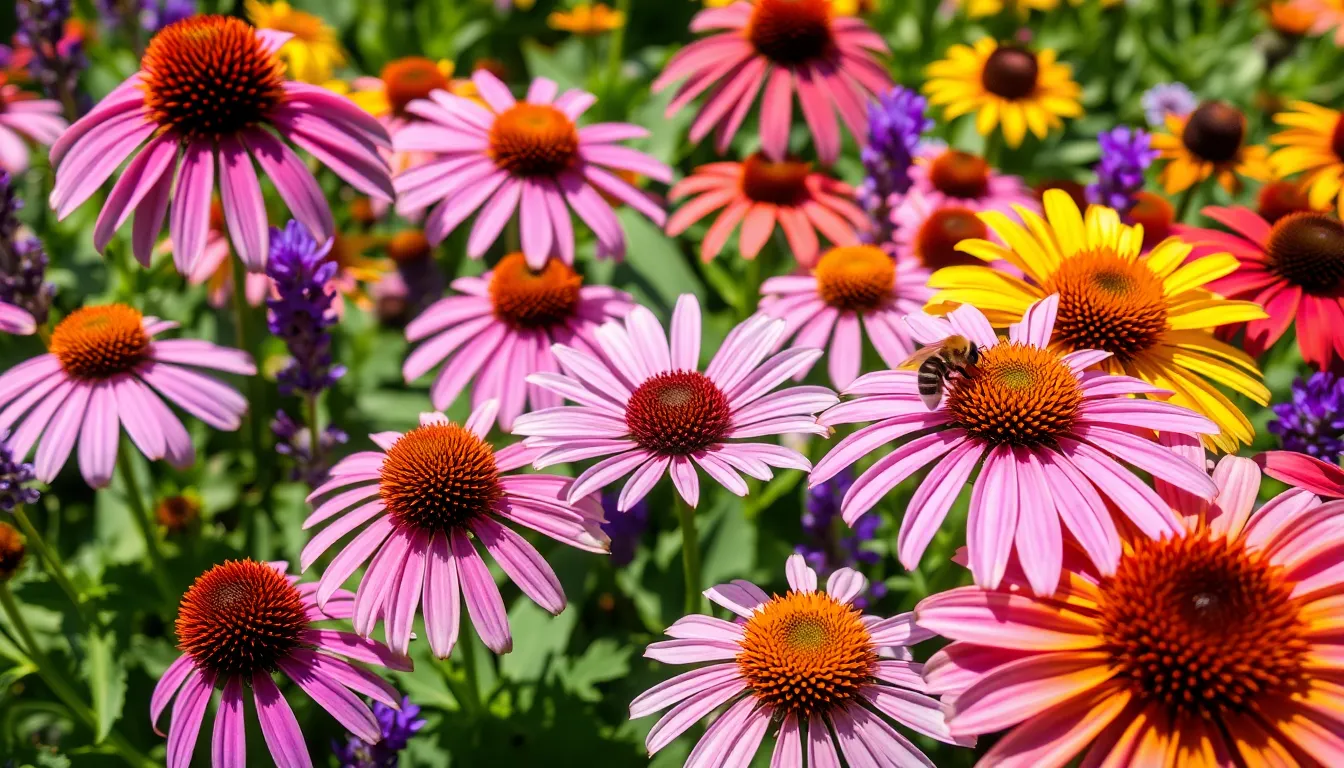Imagine stepping into your garden and witnessing a vibrant flurry of bees, butterflies, and hummingbirds dancing from bloom to bloom. Whether you are new to gardening or have years of experience under your belt, creating a pollinator garden is your chance to invite nature’s most hardworking guests into your backyard sanctuary. With the right design, your garden can become a lively ecosystem that supports the essential task of pollination while offering you a stunning and colorful retreat.
This guide is packed with practical tips that will help you design a garden teeming with life and buzzing with activity. From selecting the right plants to understanding the unique needs of different pollinators, you’ll learn how to create a harmonious environment that benefits both your garden and the planet. By following these strategies, you’ll not only enjoy the aesthetic and ecological rewards but also gain the confidence to cultivate a thriving, sustainable garden that supports biodiversity.
Plant Native Flower Varieties
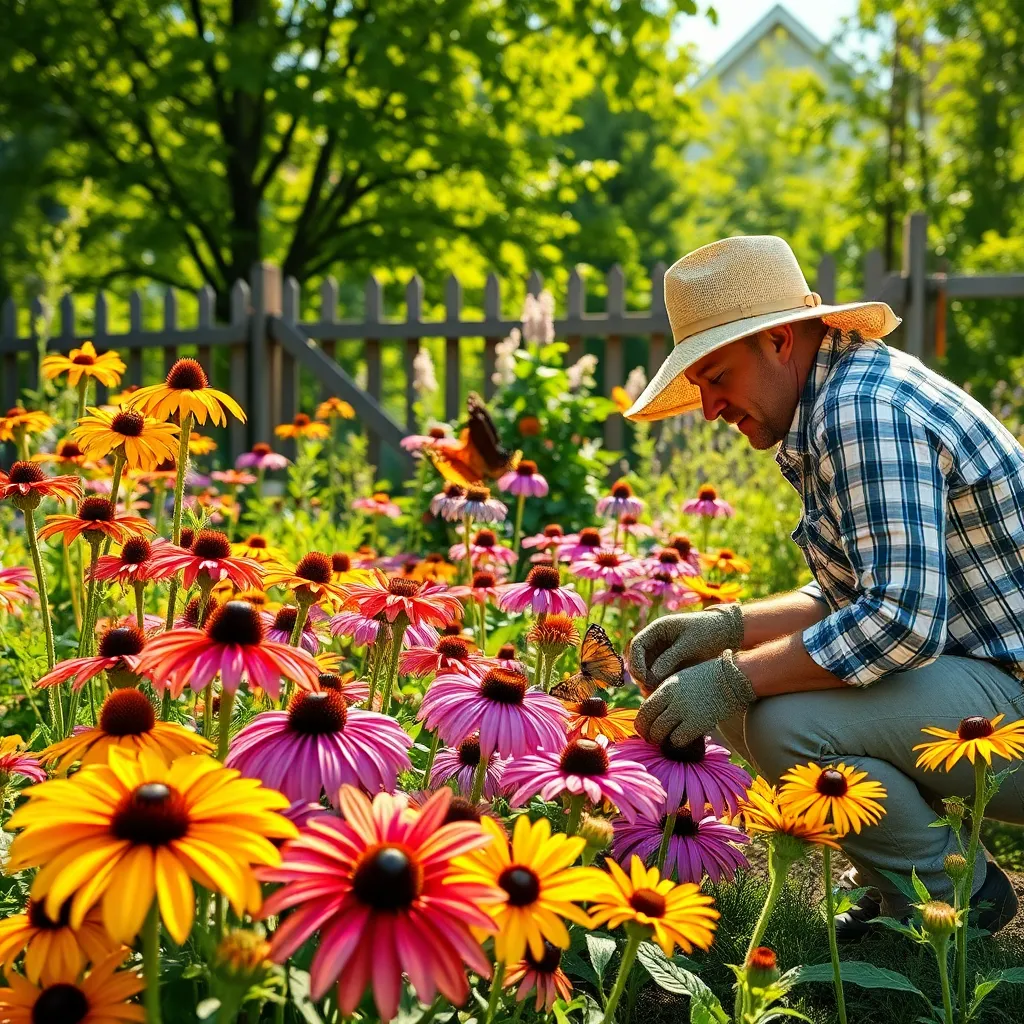
Incorporating native flower varieties into your pollinator garden is a wonderful way to attract local wildlife while ensuring your garden thrives. Native plants are adapted to the local climate and soil conditions, making them low-maintenance choices that often require less water and fertilizer than non-native species.
When selecting native flowers, consider the bloom times to provide a continuous food source for pollinators throughout the growing season. Layer your garden with early, mid, and late-season bloomers to ensure a steady influx of pollinators.
For beginners, start by researching which native plants are indigenous to your area and are known to attract pollinators like bees, butterflies, and hummingbirds. A few popular options include purple coneflower (Echinacea purpurea), black-eyed Susan (Rudbeckia hirta), and milkweed (Asclepias spp.).
Experienced gardeners can experiment with different native plant combinations to create a visually striking yet ecologically beneficial garden. Consider grouping plants with similar water and light needs together to simplify maintenance and optimize growth.
Soil preparation is key to successfully growing native flowers. Test your soil to determine its pH and nutrient levels, then amend it with organic matter if necessary to create a well-draining, fertile base for your plants.
Water new plants regularly until they are established, typically during their first growing season. After that, many native species are quite drought-tolerant and will only need supplemental watering during extended dry spells.
Incorporate Diverse Bloom Times
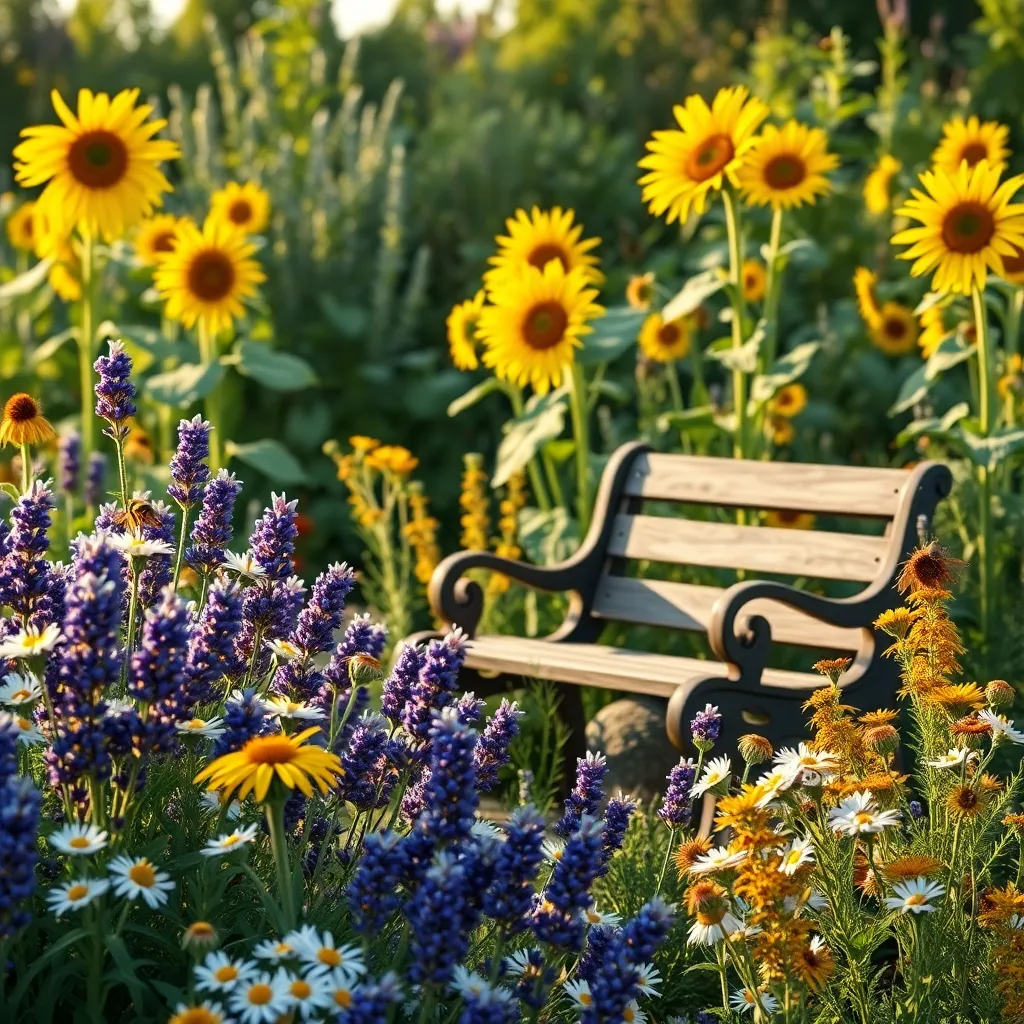
To create a thriving pollinator garden, it’s essential to incorporate a variety of plants that bloom at different times throughout the year. This ensures a continual food source for pollinators, providing them with nectar and pollen from early spring to late fall.
Start by selecting early-blooming plants such as crocuses and snowdrops, which are among the first to flower in spring. These plants can thrive in well-drained soil and require moderate watering, making them easy to establish in most gardens.
For mid-season interest, consider adding plants like coneflowers and bee balm, which are known for attracting bees and butterflies. These varieties prefer full sun and benefit from rich, well-drained soil, and should be watered deeply once a week.
Finally, ensure late-season blooms by planting asters and goldenrods, which will provide sustenance for pollinators preparing for winter. These plants are hardy and often thrive in a variety of soil conditions, though they do best with regular watering and occasional fertilization.
Create Layered Plant Heights
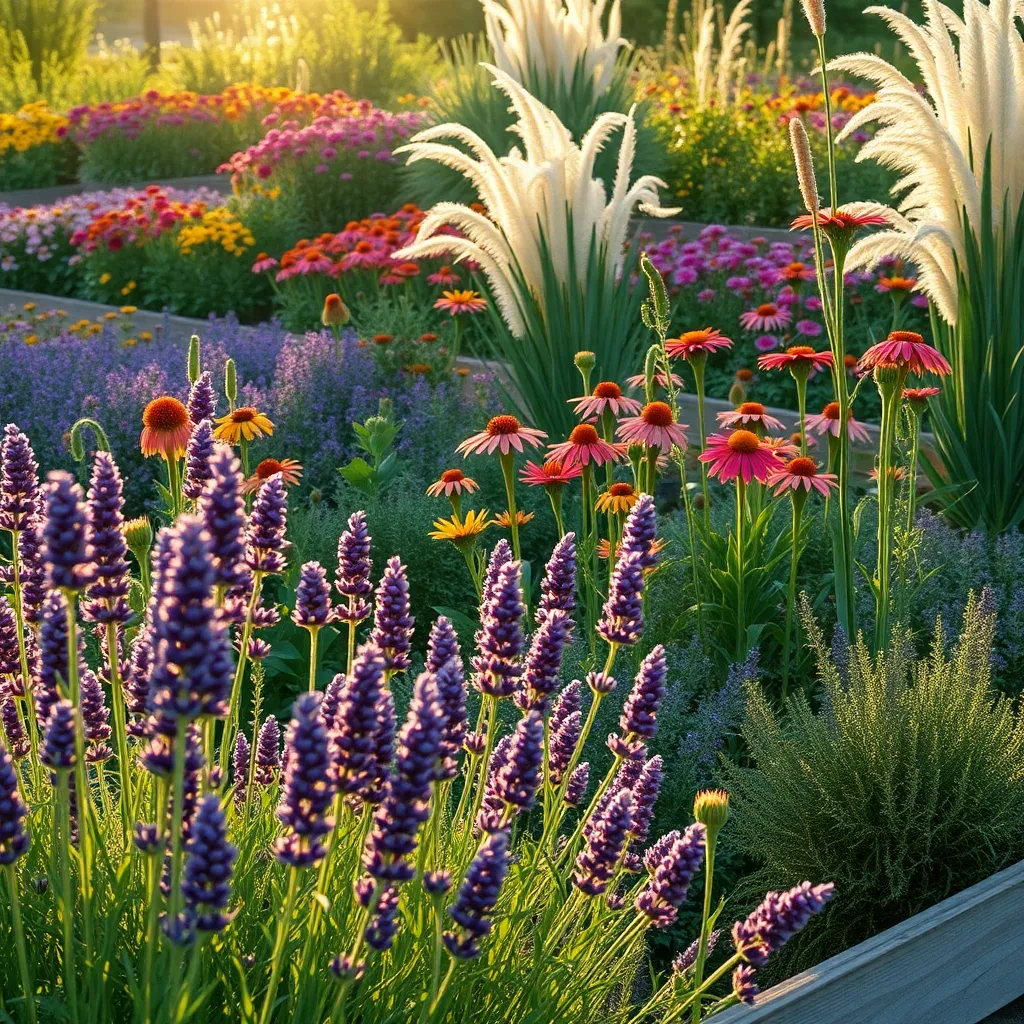
Creating layered plant heights in your pollinator garden adds visual interest and maximizes space for different pollinators. Begin by selecting a variety of plants with different growth habits, ranging from low-growing ground covers to tall shrubs or small trees.
Position your tallest plants, like sunflowers or hollyhocks, at the back of your garden bed if it’s against a fence or wall. These plants not only provide structure but also serve as a vital perch for pollinators such as bees and butterflies.
In the middle layer, include medium-height plants like coneflowers and black-eyed Susans. These plants thrive in well-draining soil and need full sun to part shade, providing ample blooms that attract a variety of pollinators throughout the season.
For the front layer, choose low-growing plants such as creeping thyme or sweet alyssum. These plants create a lush carpet that can withstand light foot traffic, and their dense blooms are particularly appealing to smaller pollinators like hoverflies.
Provide Fresh Water Sources
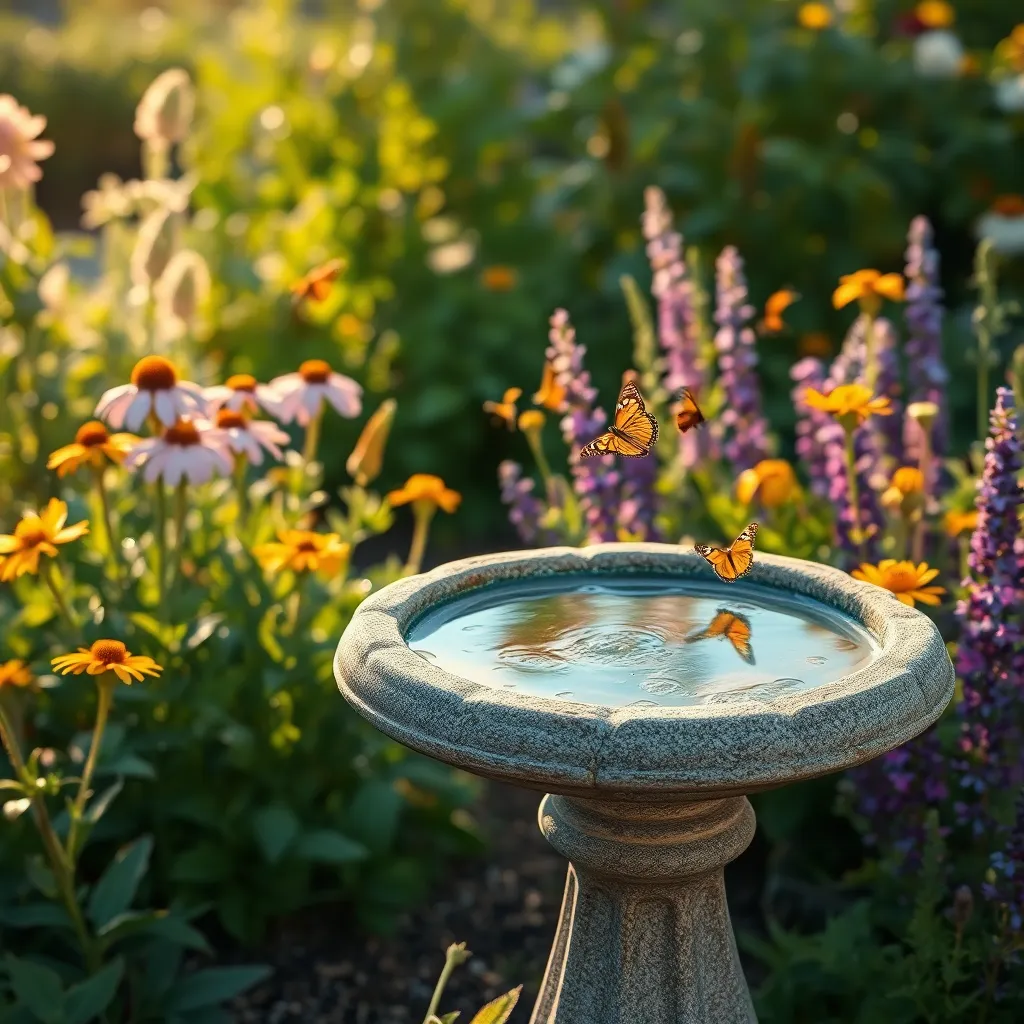
Ensuring a fresh water source in your pollinator garden is vital for attracting and supporting bees, butterflies, and birds. A simple birdbath or shallow dish can provide the necessary hydration these creatures need, especially during hot weather.
Consider placing water sources at different heights to accommodate various pollinators. Birds may prefer elevated baths, while bees and butterflies often seek water at ground level.
To prevent drowning, add pebbles or stones to the water dish, allowing smaller pollinators a safe place to land and drink. It’s important to refresh the water regularly to keep it clean and to prevent mosquito breeding.
Creating a small muddy area can also be beneficial, as butterflies often partake in “puddling” to obtain minerals. For advanced gardeners, installing a drip system can offer a continuous fresh water supply and create a soothing garden ambiance.
Avoid Pesticides and Herbicides
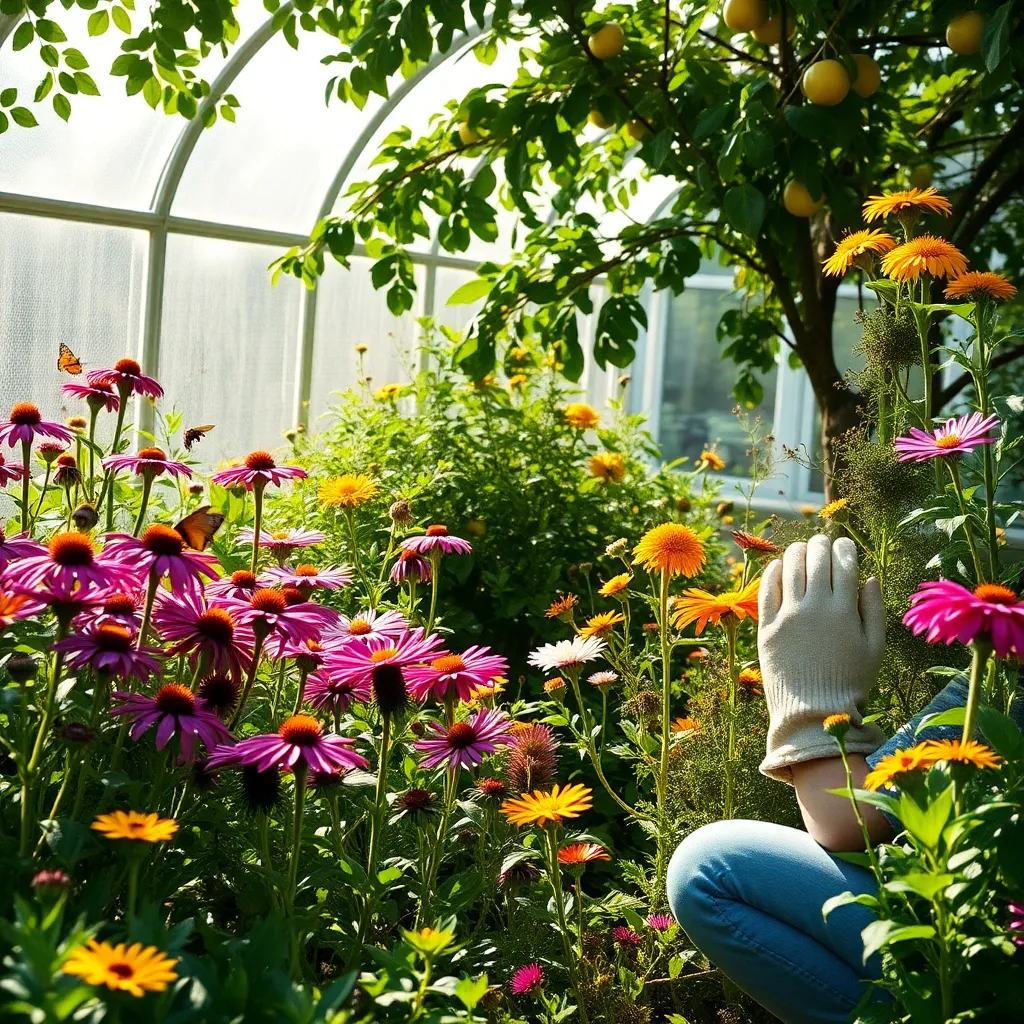
Creating a thriving pollinator garden means committing to practices that protect both plants and pollinators. Avoid using pesticides and herbicides, which can be harmful to bees, butterflies, and other beneficial insects that you want to attract. Instead, focus on cultivating a healthy garden ecosystem where natural predators help keep pest populations in check.
Consider using companion planting techniques as a way to naturally deter pests. Plants like marigolds, for example, can repel nematodes and other pests, while attracting pollinators with their bright flowers. For those dealing with a specific pest issue, introducing beneficial insects like ladybugs can offer a natural solution, as these insects are excellent for controlling aphid populations.
Another effective strategy is to maintain healthy soil, which is the foundation of a resilient garden. Enrich your soil with organic matter, such as compost, which not only improves soil health but also bolsters plant immunity against pests and diseases. By ensuring your plants have the nutrients they need, you’ll reduce their susceptibility to infestations and minimize the need for chemical interventions.
For gardeners looking to take their eco-friendly practices a step further, try implementing a mulching routine. Mulch not only helps retain soil moisture, reducing the need for frequent watering, but also suppresses weeds without the use of herbicides. Choose natural mulches like straw, wood chips, or shredded leaves to create a sustainable environment that supports both the soil and the pollinators visiting your garden.
Conclusion: Growing Success with These Plants
Creating a pollinator garden is much like nurturing a thriving relationship; both require understanding, commitment, and a touch of creativity. Throughout this article, we’ve explored five key concepts: the importance of understanding your partner’s needs, the value of creating a welcoming environment, the necessity of ongoing communication, the benefits of diversity and inclusivity, and the power of patience and time. Each concept underscores the parallels between nurturing a garden and cultivating a healthy relationship.
As you step forward, consider starting with a simple action: initiate a conversation with your partner about what they need to feel “pollinated” in their life. This small but impactful gesture can open doors to deeper understanding and connection.
To ensure these insights remain at your fingertips, save this article for future reference. Bookmark it as your go-to guide for relationship nurturing, just as you would for tending to a garden.
Remember, successful relationships, like flourishing gardens, blossom over time with care and dedication. By applying these principles, you’re not only enriching your present connection but also sowing the seeds for a vibrant future together. Embrace the journey with confidence, and watch your relationship thrive.

